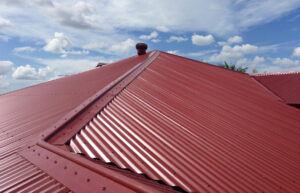A roof is the top covering of a building. It includes the constructions and materials that support it and provides protection from the weather. A roof is also a part of a building’s envelope. There are a number of different types of roofs. All of them have different purposes and have different costs and maintenance.

Proper insulation of roofs is essential for a building’s durability and sustainability. There are many options available for roof insulation. The best choice is COOL-R, an environmentally friendly material. It is easy to install and shape. A calculator can help you calculate the thickness of the insulation. After you have determined the thickness and type of insulation, it is time to start planning for roof insulation.
Traditionally, roof insulation was performed using roofing felt or tar. However, the advancements in modern technologies have made it possible to use a much wider range of materials. In addition to tar, glassine, and roofing felt, membrane-type insulating films are more convenient and reliable. They can also protect the roof structure from rotting and insects.
Flat roofs can be insulated in one or two layers. A single layer provides moderate protection against condensation and is most appropriate for non-operated roofs. The single-layer insulating material is easy to install and does not require the removal of rafters. In addition, it can fill cracks and gaps easily.
Before you choose roof insulation, you should consider the cost, specifications, and installation process. Pay special attention to the type of roof because the kind of roof insulation will determine the amount of energy savings it can provide. In addition, the type of roof will determine how much insulation is needed. For instance, if the roofing is noisy, it will be important to invest in soundproofing. Experts recommend buying insulation from a reputable manufacturer.
A common type of insulation for roofs is blanket insulation, which is available in rolls or batts. This is made from flexible fibers such as fiberglass or mineral wool. It can also be made from natural fibers. Depending on the manufacturer, blanket insulation can be very effective at reducing heat conduction through the structure.
There are many different types of mineral wool that are used in roofs. Among these materials are rock wool, glass wool, and eco wool. These materials are durable, and they also provide good sound insulation. Choosing the right type of mineral wool for your roof is important. It is also important to consider the technical characteristics of each type of mineral wool. The thermal conductivity of the material is the main factor that determines how effective it is. The lower it is, the better it will be.
A roof covers the top of a building, preventing extreme temperatures from getting inside. It can be flat, pitched, vaulted, or domed. The form is determined by aesthetic, economic, and technical considerations. A roof can be made of a variety of materials, including metal, wood, and clay tiles.
When it comes to the cost of roofs, there are several factors that will determine the price. The weight of the roof itself will determine the cost, but you can also factor in the cost of the materials used. Using lightweight materials like wooden trusses can lower the overall cost. However, heavy materials like steel and concrete can increase the cost.
The size of the roof, its pitch, and its complexity will also affect the price. Fortunately, there are many options available. You should contact several qualified roofing contractors to get an accurate price quote. You will also need to factor in the season of the year and whether it is a flat or pitched roof. You’ll also need to consider the material used and the complexity of the roof.
